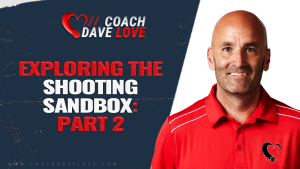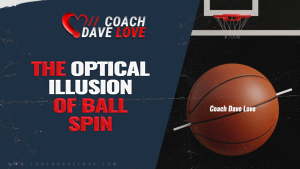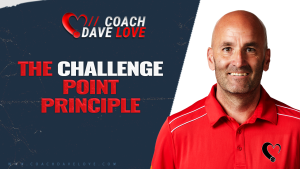Differential Learning (DL) has gained attention in recent years as an effective framework for skill acquisition in dynamic sports like basketball. Rather than promoting the rigid repetition of ideal movement patterns, DL emphasizes variability and exploration as a way for athletes to discover and refine their own solutions to performance challenges. In the context of basketball shooting, this means moving away from drilling a single “perfect” shot and instead encouraging players to adapt and adjust their technique to meet the fluid demands of real game situations.
This blog explores the principles of Differential Learning, its benefits, potential drawbacks, and how coaches can effectively apply DL in basketball shooting development.
What is Differential Learning?
Differential Learning is based on the premise that variability is not only natural but essential for skill development. Traditional coaching methods often focus on minimizing errors and promoting repetition of the “ideal” movement. While this can produce short-term improvement, it often leaves athletes ill-prepared for the variability they will face in competition. DL, on the other hand, embraces variability as a tool for teaching adaptability.
DL encourages athletes to explore a broad range of movement patterns rather than just focusing on one “correct” form. In basketball shooting, this could mean intentionally varying foot positioning, release angles, or shooting arcs. This exploration helps athletes develop a deeper understanding of their technique and equips them with the tools to adjust their shot in response to real-time game conditions. In essence, DL leverages purposeful variability to help athletes become more adaptable and resilient in their performance.
The Benefits of Differential Learning: Teaching Adaptability
One of the key benefits of Differential Learning is its ability to foster adaptability. In traditional shooting development, coaches often push players to replicate the same movement pattern over and over in the pursuit of “perfect” form. However, basketball is a dynamic sport where the ideal shooting conditions—such as balance, foot positioning, and hand placement—are rarely present. Therefore, a shooting form that works in practice may break down in a game if the player has not learned how to adapt it to different situations.
DL offers a solution by encouraging players to explore movement patterns around an optimal solution, or as I said in another blog “explore around the edges of the sandbox”. This exploration exposes athletes to a variety of shooting scenarios, such as adjusting foot placement under defensive pressure or altering shot trajectory to avoid a block. By encountering and solving these motor problems, players learn to adapt their shot on the fly.
In addition, DL helps players understand why certain movement patterns may be working against them. Through guided exploration, they can experience less effective solutions firsthand. For example, a player might experiment with shooting from an overly narrow stance and feel the imbalance it may cause. Conversely, they might explore an excessively wide stance and notice how it affects their power. By experiencing these variations, players begin to connect the dots between biomechanics and performance, developing a more intuitive sense of what works best for them.
This process ultimately leads to a more adaptable and self-aware shooter, one who can adjust technique fluidly based on the demands of the game. The goal is not to eliminate variability but to embrace it, using it as a vehicle for learning and improving shooting performance.
Potential Drawbacks of Differential Learning: The Importance of Proper Application
While Differential Learning has clear benefits, its effectiveness depends heavily on how it is applied. One of the main challenges with DL is that it requires a deep understanding of both the optimal movement patterns and the principles of motor learning. Coaches who lack this knowledge may misapply DL, resulting in confusion or stagnation for the player. After all, how can a coach guide players to explore around a more optimal movement pattern when the coach doesn’t know what habits they are guiding towards.
A common misconception among coaches unfamiliar with DL is that it is simply about adding variability to a practice session. However, variability needs to be introduced in a controlled and purposeful way. For instance, some players—especially weaker shooters—may have stablized but inefficient shooting forms. These players need to start by exploring around a more optimal solution rather than introducing too many Degrees of Freedom too soon. Introducing excessive variability without guiding the player toward a specific goal can overwhelm them and prevent meaningful improvement.
One key concept to consider is the Freezing and Freeing of Degrees of Freedom. When players are learning a new skill, they often need to “freeze” certain aspects of their movement, limiting complexity so they can focus on mastering the basics. As their proficiency increases, they can gradually “free” more Degrees of Freedom, allowing for greater fluidity and adaptability. A coach applying DL without this knowledge might inadvertently introduce too much variability, causing a breakdown in performance rather than improvement.
Another important consideration is the Challenge Point Principle—the idea that learning occurs most effectively when the task difficulty is appropriately matched to the athlete’s skill level. Players need to be challenged enough to learn but not so much that they become overwhelmed or frustrated. A coach using DL must carefully balance variability with the player’s ability to process and adapt. If players spend too much time outside the Challenge Point, they may plateau in their development or reinforce inefficient habits.
For DL to be effective, coaches must understand the specific habits they are guiding players toward and apply skill acquisition principles thoughtfully. Without both these foundational ideas in place, variability becomes noise, and the potential benefits of DL are lost.
How to Apply Differential Learning in Basketball Shooting
To use Differential Learning effectively in basketball shooting, coaches need to incorporate intentional variability in a way that promotes learning and adaptability. One of the most effective ways to introduce DL in a game-representative manner is to simply add a defender to shooting drills. The presence of a defender forces the shooter to adapt their technique to the situation, which may involve adjusting foot positioning, altering body posture, or changing the arc of the shot. These are real-time adaptations that players will need in a game, making the learning more transferable to competition.
A skilled coach can constrain the defender in specific ways to accelerate learning. For example, the defender could be instructed to close out from a particular angle, forcing the shooter to adjust their footwork or body position in response. By carefully controlling the defender’s actions, the coach can guide the player toward exploring movement solutions that are directly relevant to the optimal shooting habits being developed.
In addition to using defenders, coaches can introduce more targeted variations around key shooting habits, such as foot width, ball path, or shooting arc. For example, a coach could ask a player to shoot with a very narrow base, followed by guided questions like, “How did that feel? Were you able to get stable or balanced effectively?” Afterward, the player might try shooting with an unrealistically wide base and again reflect on the experience. This guided exploration helps the player develop a deeper awareness of their movement and how small adjustments can affect the quality of the shot.
The same approach can be applied to other aspects of shooting, such as the arc of the shot. Rather than always aiming for the “optimal” arc, a coach could encourage players to experiment with a flat arc and then with an exaggerated arc, discussing how each felt and what impact it had on the shot. This exploration allows players to internalize the mechanics of different movement solutions and understand how to adjust their shot based on the game’s demands.
The role of the coach in DL is to guide the player toward discovering more optimal movement patterns while still allowing for exploration. The coach must carefully design practice conditions that provide the right amount of variability and challenge while helping the player connect their feelings to the resulting action. As players explore different movement patterns, the coach should facilitate reflection and self-awareness, helping players learn not only what works but why it works.
Conclusion
Differential Learning represents a powerful approach to basketball shooting development, offering a pathway to increased adaptability and resilience in performance. By encouraging players to explore movement solutions around optimal habits, DL equips athletes with the ability to adjust to real-world game conditions. However, its application requires a deep understanding of shooting mechanics, motor learning principles and a structured approach to variability. Coaches must balance exploration with a clear vision of the movement patterns they are guiding players toward, ensuring that athletes remain within an appropriate Challenge Point to maximize their development.
When used effectively, DL fosters not only better shooters but more adaptable, self-aware athletes capable of responding to the ever-changing demands of basketball.



